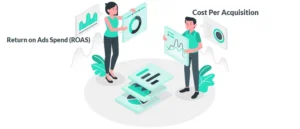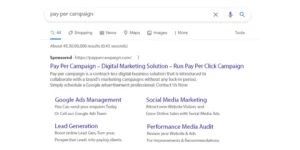Introduction
In the fast-paced world of digital marketing, the ability to measure the return on investment (ROI) of your content efforts is crucial. As we move further into 2023, understanding the impact of your content is more important than ever. In this blog post, we’ll explore the key strategies and metrics you can use to effectively measure the ROI of your content marketing efforts in the current landscape.
The Shifting Landscape of Content Marketing
Content marketing has evolved significantly in recent years. As we progress into 2023, it’s essential to recognize the factors that are shaping this landscape.
- Content Diversification: Content now spans various formats, including blog posts, videos, podcasts, infographics, and interactive content. Diversification is essential to cater to different audience preferences.
- Content Personalization: Tailoring content to individual audience segments is crucial. Customized content frequently results in increased user involvement and conversions.
- Quality Over Quantity: Creating high-quality, valuable content is more important than ever. Search engines and audiences alike favor content that offers genuine value.
- Increased Competition: As more businesses recognize the value of content marketing, the competition for audience attention has intensified.
Given these changes, measuring the ROI of your content efforts requires a well-structured approach.
Key Metrics for Measuring Content ROI
- Traffic and Engagement Metrics
- Website Traffic: Analyze the increase in website traffic resulting from your content efforts.
- Bounce Rate: A high bounce rate may indicate that your content is not engaging or relevant to your audience.
- Time on Page: A longer average time on the page suggests that visitors are engaging with your content.
- Lead Generation Metrics
- Conversion Rate: Track how many website visitors are converting into leads. This can include email sign-ups, form submissions, or other desired actions.
- Lead Quality: Evaluate the caliber of leads generated through content. Would potential clients show a genuine interest in your products or services?
- Sales Metrics
- Conversion to Customers: Measure how many leads from your content efforts ultimately convert into paying customers.
- Revenue Generation: Quantify the revenue generated from customers acquired through content marketing.
- Content Engagement Metrics
- Social Shares: Analyze how often your content is shared on social media platforms. Shares indicate that your content resonates with your audience.
- Comments and Feedback: Monitor comments, feedback, and interactions on your content to gauge audience sentiment.
- SEO Metrics
- Keyword Rankings: Check whether your content is ranking for relevant keywords in search engines.
- Backlinks: The number and quality of backlinks to your content can impact your search engine rankings and authority.
- Customer Lifetime Value (CLV)
- Evaluate the long-term value of customers acquired through your content marketing efforts. High CLV indicates the success of your strategy.
- Cost Metrics
- Cost Per Acquisition (CPA): Calculate the cost associated with acquiring a customer through your content marketing efforts.
- Content Production Costs: Assess the expenses related to creating and promoting your content.
Steps to Measure Content ROI
- Set Clear Goals: Clearly define the goals you want to achieve through your content marketing efforts. Whether it’s lead generation, brand awareness, or revenue, having specific goals is crucial.
- Use Analytics Tools: Leverage analytics tools like Google Analytics, social media insights, and marketing automation platforms to track the metrics mentioned above.
- Attribution Modeling: Understand the customer journey and how different pieces of content contribute to conversions. Multi-touch attribution models provide a more accurate picture of content’s impact.
- Calculate ROI: To calculate the ROI, subtract the costs associated with content creation and promotion from the revenue generated through content-driven conversions. Divide this figure by the total costs.
- Regularly Analyze and Optimize: Continuously analyze your content metrics and ROI. Use the insights to refine your content strategy, focusing on what works best.
- Benchmark Performance: Compare your content ROI with industry benchmarks to gauge your performance relative to peers.
Conclusion
In conclusion, measuring the ROI of your content marketing efforts in 2023 is essential for demonstrating the value of your strategy and justifying your investments. Utilize a combination of traffic, lead generation, sales, engagement, and cost metrics to gain a comprehensive view of your content’s impact. By setting clear goals, using analytics tools, and staying committed to regular analysis and optimization, you can ensure that your content efforts deliver a strong ROI.
To learn more or to acquire our services, please contact us at info@paypercampaign.com




